Scott #113 is part of the 1869 Pictorial Issue, a landmark series in U.S. postal history for being the first to introduce designs beyond the traditional portraits of statesmen and allegorical symbols.
The 2-cent denomination depicted the Pony Express, a service that operated briefly between 1860 and 1861 but became strongly associated with westward expansion and rapid mail delivery across the continent. Its inclusion in the series emphasized the Post Office Department’s recognition of the role private enterprise had played in shaping American communication before the completion of transcontinental telegraph and rail service.
As with the rest of the 1869 issue, Scott #113 was produced in relatively large numbers to satisfy postal needs, but its subject matter made it stand apart from earlier issues that had exclusively portrayed presidents and founding fathers.
Design & Print
The National Bank Note Company, which held the government contract at the time, printed Scott #113 in 1869. The design was engraved in brown on hard wove paper, and like other stamps in the series, it bore the experimental “G” grill. This grill, measuring 12 by 11 points, was impressed into the paper to prevent reuse by ensuring cancellation ink would penetrate the fibers.
The vignette illustrates a Pony Express rider on horseback charging across the landscape, conveying speed and determination. The inscription “United States Postage” frames the design, with “Two Cents” spelled out below the vignette.
Approximately 45 million examples were printed, reflecting the demand for the 2-cent rate during this period. The choice of subject—commemorating a private courier system that operated under difficult conditions—was unusual for the time and underscored the 1869 issue’s break from conventional portraiture.
Postal Usage
The 2-cent denomination in 1869 was used primarily for printed matter and newspapers, as well as for supplementary postage to make up composite rates. Under the postal laws of the time, domestic letter postage was fixed at 3 cents per half ounce, so the 2-cent Franklin was not a stand-alone letter rate.
Instead, it was frequently used on circulars, periodicals, and drop letters, or combined with 1-cent and 3-cent stamps to form exact postage for heavier or international mailings. The denomination fit within a postal system that was expanding rapidly after the Civil War, accommodating both urban drop services and the growing circulation of newspapers and printed advertisements.
Identification
Scott #113 is distinguished by its brown color, the engraved Pony Express vignette, and perforation 12 format. The “G” grill is a critical identifying feature, measuring roughly 12 by 11 points. The grill pattern appears as small square indentations visible when the stamp is examined under magnification or by light angling.
The design itself is horizontal, unlike the vertical format of the 1-cent Franklin (Scott #112), and is immediately recognizable for its depiction of the mounted rider. Specialists also note the fine details of the horse and rider, particularly the rendering of the horse’s legs and saddle gear, which are diagnostic points in authentic examples.
Compared with other issues of the 1869 series, Scott #113 is unique in both subject and coloration, ensuring it is identifiable as the 2-cent Pony Express stamp of the Pictorial Issue.

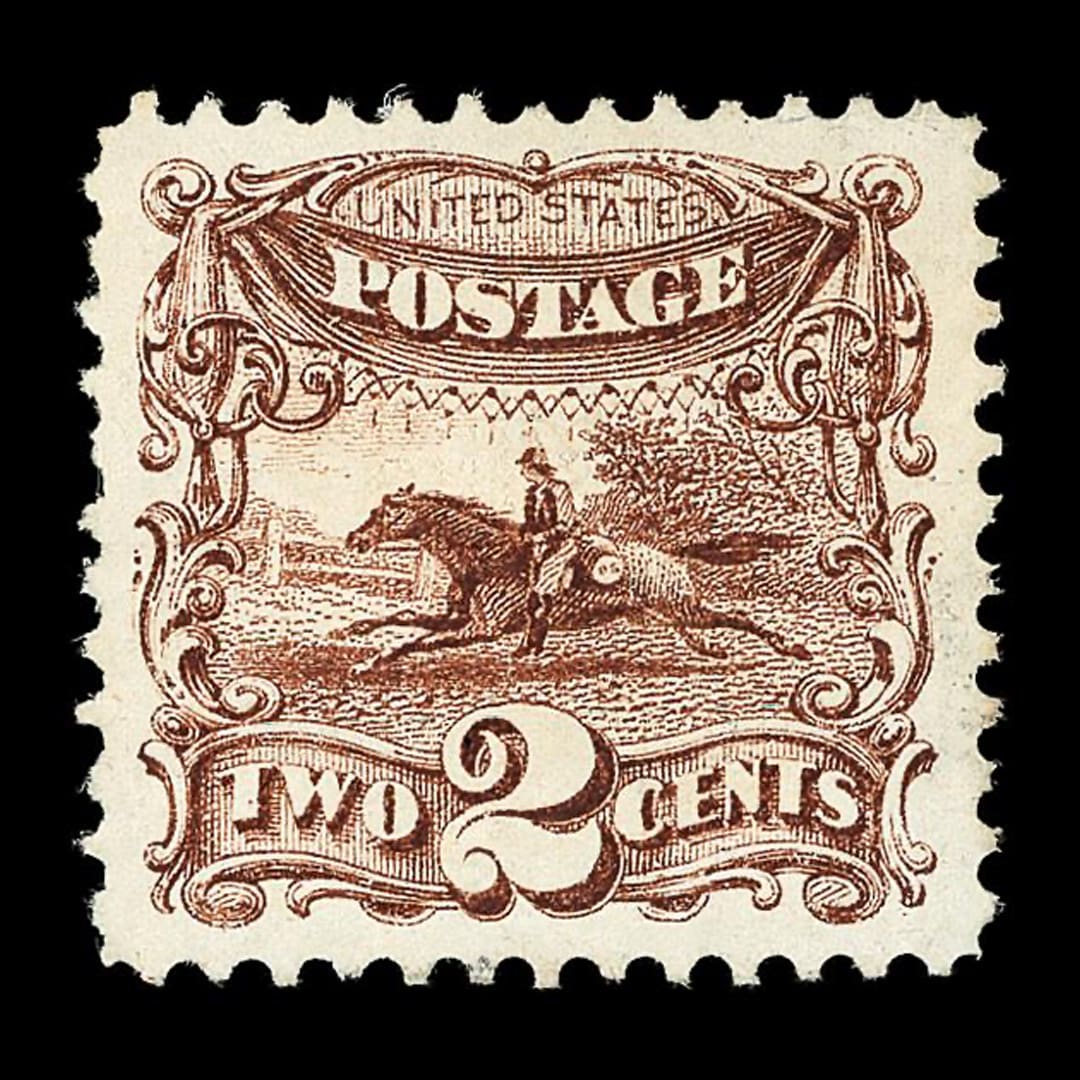

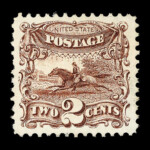
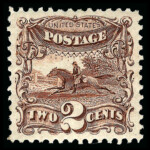
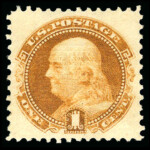
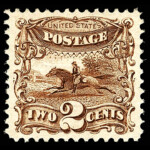
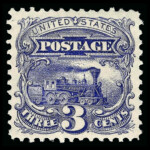
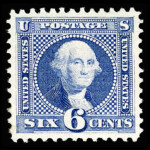
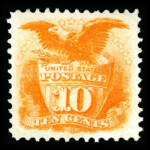

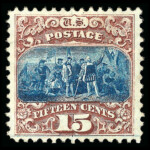
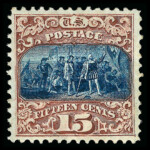

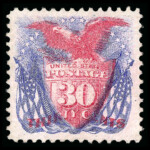













Ask A Question Or Leave A Comment